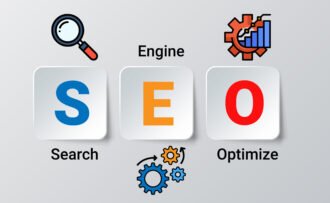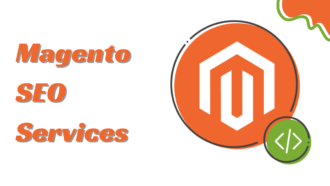The Hidden Connection: How UI/UX Design Is Related to SEO
- 1 Understanding the Crucial Connection Between UI/UX Design and SEO
- 2 Best Practices for UI/UX Design that Boost Your SEO Strategy
- 2.1 Simplify the structure and navigation on your website –
- 2.2 Make your website mobile-friendly:
- 2.3 Create high-quality, engaging content-
- 2.4 Optimize load time:
- 3 Common UI Design Mistakes That Hurt SEO
- 4 Final Thoughts About UI/UX and SEO
Creating a robust commercial application requires a comprehensive approach and cooperation between numerous specialists, including developers, designers, project managers, content managers, SEO specialists, and business analysts. Many of these processes are interconnected, and often in an unobvious way. Let’s focus on design (an example of the most demanded UI/UX services: https://elitex.systems/ui-development) and how a decent UI/UX can help you improve SEO ranking and conversion.
While these concepts may seem unrelated at first glance, the connection between UI/UX and search engine optimization (SEO) can easily be overlooked. However, reasonable UX solutions impact SEO, and best designing practices are built considering this connection. Let’s dive into the topic and see how it works in practice.
Understanding the Crucial Connection Between UI/UX Design and SEO
When designing any website, the user experience (UX) is often at the forefront of a designer’s mind. After all, a well-designed site should be visually appealing, dynamic, intuitive, and easy to navigate and use.
Search engines like Google or, for instance, Bing, use complex algorithms to determine which websites should appear at the top of search results, and a website’s UX will play a significant role in the whole process. Search engines usually prioritize sites that load quickly and have a low bounce rate (the percentage of users who leave the websites just after viewing a single page). A website with poor UX solutions is more likely penalized due to lousy optimization than others, making it harder to find for potential customers.
At the same time, optimizing your site for search engines is not just about stuffing keywords into your content or adding meta tags to your HTML and SEO plugins, as many think. While these practices were very effective in the past, they are certainly not enough for modern search algorithms that often prioritize excellent site optimization and a decent user experience.
In brief, a website with a decent UI/UX design is likelier to rank well on Google than without. Websites with clear, easy-to-use menus, intuitive navigation systems, fast loading speeds, and high-quality content will have more chances to be viewed favorably by both users and search engines alike. Therefore, SEO is vital for achieving online success when designing a website.
A quick tip: Knowledge about small nuances like the interrelation of UI/UX design and SEO is an excellent way to spot a skilled web designer.
Best Practices for UI/UX Design that Boost Your SEO Strategy
As mentioned above, a strong correlation exists between a website’s position in Google search results and factors attracting more visitors. Search algorithms continue to prioritize quality content, user engagement, fast loading, and robust web design solutions.
Here are a few tips to keep in mind when building a design for your website:
Simplify the structure and navigation on your website –
A straightforward and intuitive navigation menu can help users quickly and easily find what they want. Although there is no strict rule, “fewer pages – better SEO,” it often works.
Make your website mobile-friendly:
An essential part of overall optimization is creating solid designs for small screens. Use responsive design techniques to ensure your site looks and functions great on all devices, regardless of the operating system and screen sizes.
Create high-quality, engaging content-
Besides writing texts full of keywords, you should also pay special attention to your page’s high-quality images, videos, infographics, and other visual content. Adding visual content is a proper way to avoid your website looking like massive walls of text. Also, incorporating such content can help with SEO by providing opportunities to include all tags, captions, and other relevant metadata on your page.
Optimize load time:
Slow loading speeds frustrate users, and it’s an important ranking signal for search engines. Reducing load time means making the site better for both users and Google.
Common UI Design Mistakes That Hurt SEO
Although we have focused primarily on UX previously, UI is also important for creating an appealing web design that improves SEO rates. Several practices you should utilize for building SEO-friendly UX design are provided below; however, UI requires quite the opposite approach. When it comes to UI, there is no versatile strategy you should use to boost your site on Google, but there is a list of things you should avoid when designing UI for your product.
Take a look at the short list of design mistakes you should avoid:
- A cluttered and complicated layout that overwhelms users and makes it harder to find the necessary information;
- Overuse of disrupted pop-ups and other intrusive elements that frustrate customers and lead to a higher bounce rate;
- Infinitely scrolling web pages is usually perceived negatively by Google due to the specificity of its metrics system;
- Lack of content on your products or services page;
- Not having a 404 page. It can also negatively impact both your customers’ experience and SEO rates.
Measuring and Analyzing the Impact of UI/UX on SEO
It should be said that all of these practices and tips can be precisely measured and analyzed, and it’s an essential step for optimizing overall website performance. Some important metrics to check how your UI/UX design affects SEO are bounce rate, time on site, and mobile responsiveness. All of them are directly connected to the number of website visitors and the time they spend. These measures can give you valuable insights into customer engagement and the overall interest in the content of your website, which will impact your SEO ranking.
Final Thoughts About UI/UX and SEO
In conclusion, SEO is critical to remember throughout website development and design. By understanding the crucial connection between UI/UX and SEO and implementing best practices while avoiding common mistakes, you can optimize websites for customer engagement and search engine visibility.
Ultimately, a website’s success depends on its ability to provide a seamless user experience while being visible and accessible to Google and other search engines. By focusing on UI/UX and SEO interplay, site owners and designers can create a website that looks great and engages users, generates conversions, and drives traffic from search engines.


















